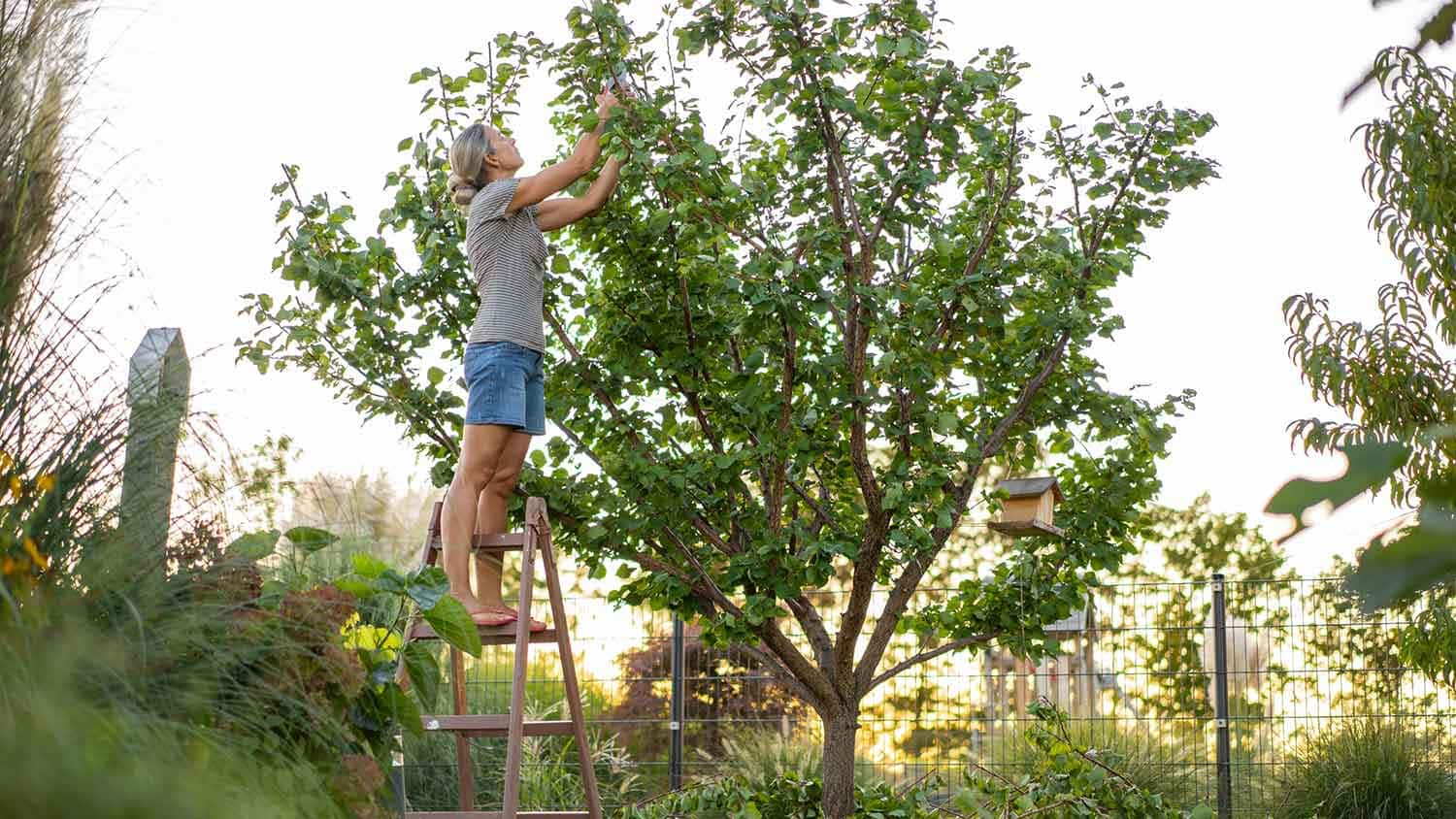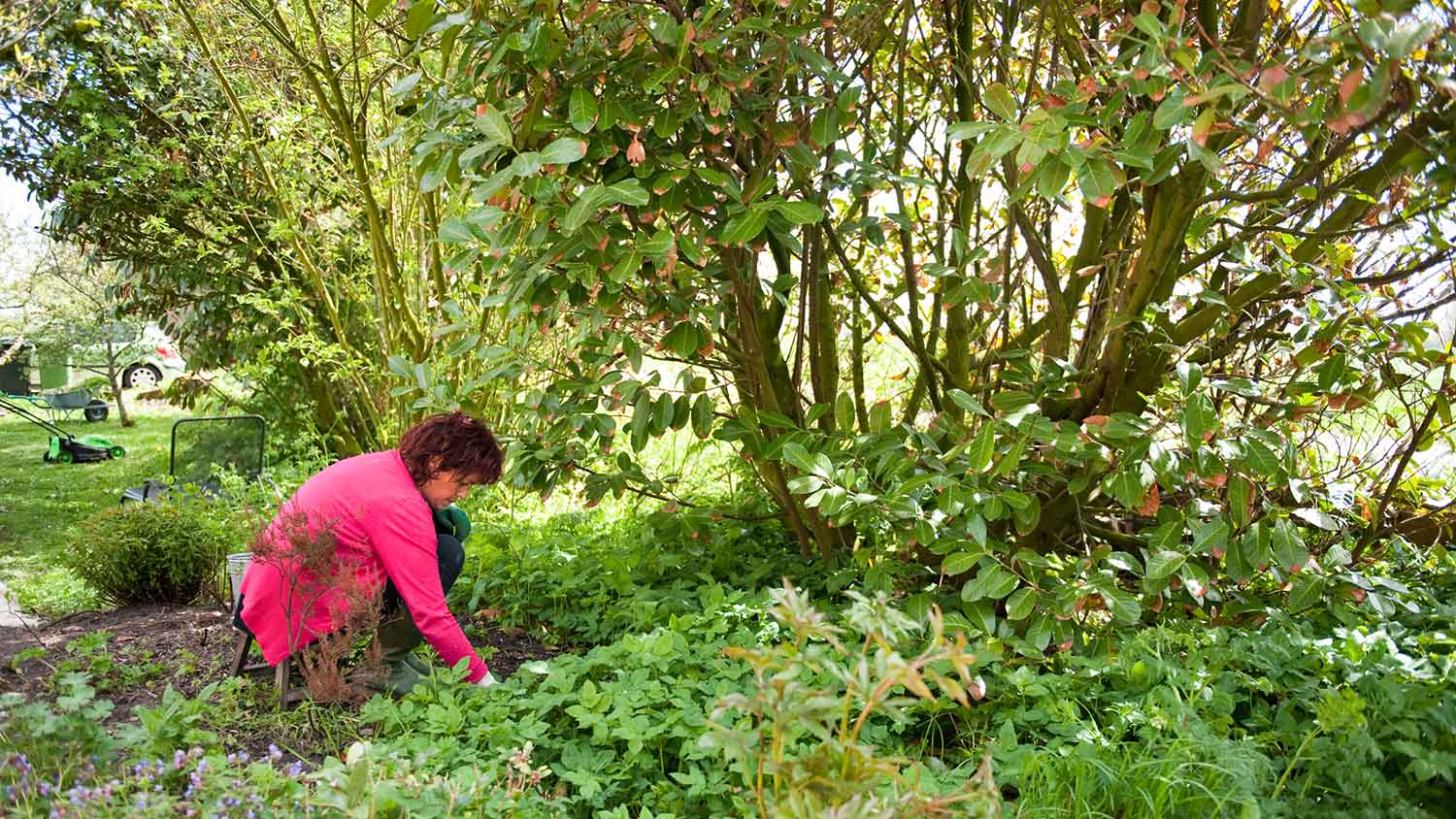
How much does it cost to rent a chainsaw? Whether it’s for cleaning up your yard or cutting firewood, learn what options are available and what you’ll pay.
Help your trees turn over some new leaves


After a long, harsh winter, your yard’s trees might be in need of some TLC, and you might be itching to spend some time in the sunshine. Get out your pruning shears and garden gloves and follow these eight spring tree care tips to ensure your trees enter the new season healthy and stay strong for a long time.
Inspect your trees for any damage or disease that may have formed over winter. As spring approaches, your tree should start to flower or grow new leaves; if it’s looking sparse, something could be wrong, especially if the crown (the top) looks thinner than the rest.
If the tree’s leaves are yellow, it could be a sign of overwatering from winter storms caused by poor soil drainage. Cracking wood or bark wounds and holes is a sign the tree might be decaying, and should be looked at by a professional local arborist or tree service company in case you need to remove it.
Talk to a local arborist to learn which pests you should look out for; each tree and climate is different. Some insects, such as Oak Processionary moths, can be hazardous to you, too, causing rashes and respiratory issues. Aphids and spider mites can usually be handled with a strong blast of water from your garden hose. Don’t forget to check leaves and bark for common tree fungi as well.

Weed the ground around your trees and remove any debris that has accumulated, as well as fallen leaves, fruit, or other yard debris. Make sure to also remove competing plants, such as ivy. Ivy can hide decay and collect moisture near the tree’s root crown, which encourages fungal growth.
Some branches may have died over the cold winter. To encourage new growth, prune them. Other reasons to prune your trees include removing hazardous branches and helping fruit grow. Willow and cherry blossom trees are two kinds of trees that respond very well to pruning.
You should never prune more than 25% of your tree’s foliage at one given time, and should always use sharp, clean tools to make smaller cuts.
Your trees might be used to wetter winter weather. Make sure to water the soil well—infrequent soakings are better than frequent sprinklings as trees grow. Check the soil moisture once every week, about 4 to 6 inches below the surface. It should be moist, but not wet.

Mulch helps soil to retain moisture and resist weed growth, both of which are very important for young trees. Apply 3 to 5 inches of fresh mulch about 2 to 3 inches away from the tree’s base. Mulch applied too close to the trunk or on it can encourage fungal growth.
Add a slow-release fertilizer before trees and shrubs enter their peak growing season. This will replace nutrients and protect plants from disease, insects, and stress. It will also boost the soil’s health.

Spring is the season for fresh starts. Plant new trees to enhance your landscape. Look for ones that are native to your area to encourage them to thrive. If you live in a hotter region, plant trees as early as possible so they can establish roots before the weather warms up.
From average costs to expert advice, get all the answers you need to get your job done.

How much does it cost to rent a chainsaw? Whether it’s for cleaning up your yard or cutting firewood, learn what options are available and what you’ll pay.

Discover the average tree maintenance cost, key price factors, and tips to save. Get expert insights to plan your tree care budget with confidence.

Get a clear estimate of palm tree maintenance cost, including trimming, fertilization, and pest control, so you can keep your palms healthy and your budget on track.

Japanese flowering cherry trees require some know-how to keep them thriving and disease-free. Read on to learn how to grow flowering cherry trees.

Learn how to kill poison ivy on a tree using one or more of several effective methods to remove or control this noxious plant.

Ever wanted to learn how to grow a tree from a branch? Learn how to grow a tree from a cutting to boost curb appeal for much less with propagation.